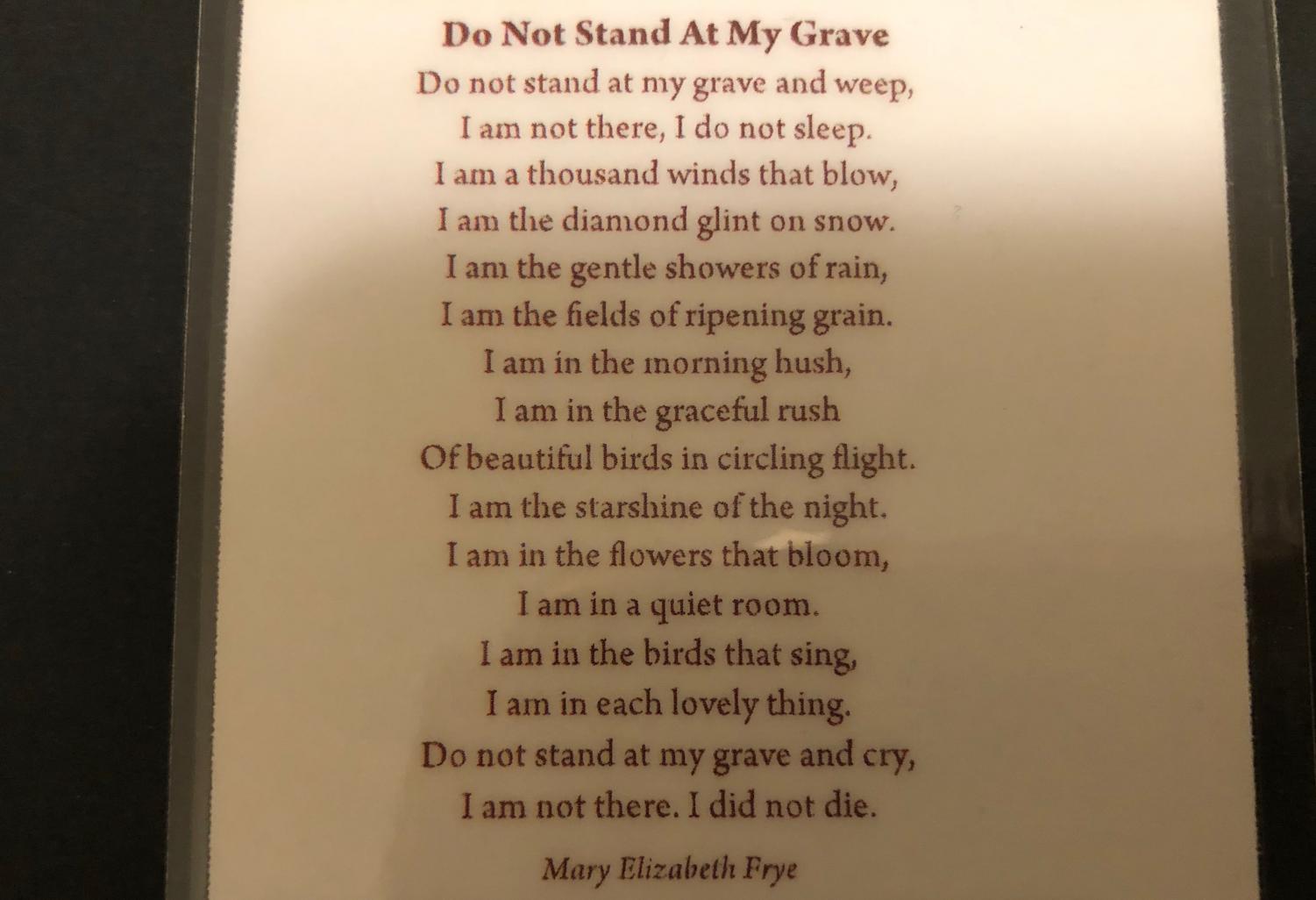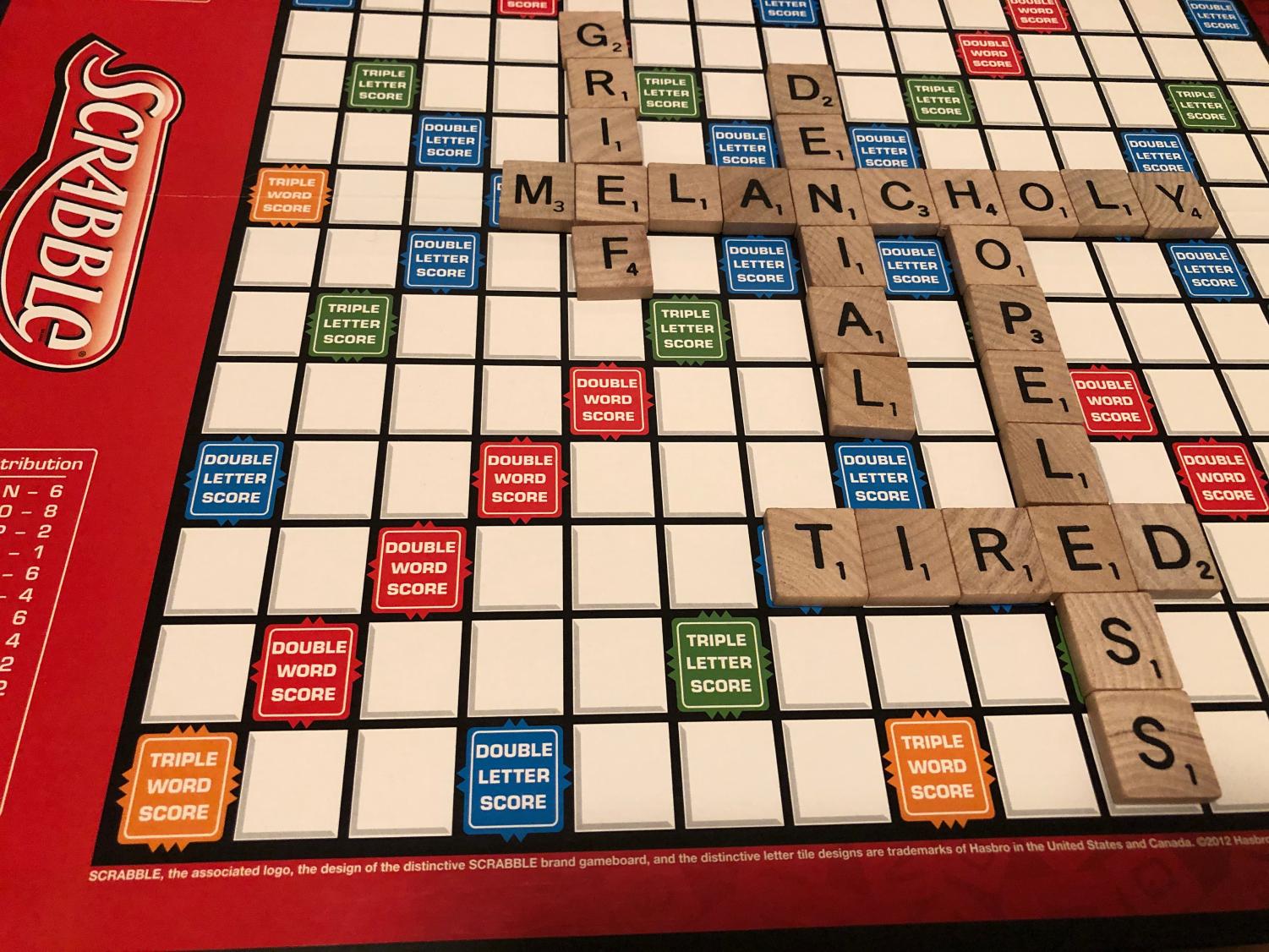16 lessons about grief from a 16-year-old
Grief marks a period of darkness and tragedy, but certain strategies and mindsets, outlined below, will make the process less painful.
In light of the Aug. 3 mass shooting and the tragic passing of Jose Prieto, students and staff alike have been deeply affected by death. As such, this compilation of simple pieces of wisdom aims to facilitate the difficult process of loss and what comes afterward.
Lesson One: The immense and seemingly infinite struggle does get easier.
As one of the most difficult times of a person’s life, loss provokes an intense yearning for what once was. The heart feels physically torn in two, the soul rendered in half, and time divided into a before and an after. The pain, an indescribable pit of starkly negative emotions, seems eternal and unfading.
Yet, time works a transcendent magic and slowly removes some of the damage, making each day more and more endurable.
Lesson Two: Grief does not have a set schedule.
There is no set length of time for grief. It is impossible to determine how long it will take before the internal feelings of despair begin to assuage. Throughout the process, be patient and recognize the light at the end of the tunnel, barely visible but advancing ever closer.
Lesson Three: Growth makes it bearable.
“Getting over it” simply does not occur. Rather, getting through it is the process by which healing occurs. The experience is never going to be truly over, but through growth, it becomes manageable and eventually, normal. Growth comes with time and getting in touch with one’s emotions.
Lesson Four: Do not dwell on past mistakes.
Remembering the past and being thankful for the time spent together is crucial. That said, do not harbor any regrets about actions taken or not taken.
Constantly reliving every second that could have been better only creates more pain. Ultimately, life is meant to be lived without regrets. Remember the actions that made them smile and the perfect memories together instead.

A blurry jumble of well-known words of comfort – and even homemade food and delicate flowers – may fill interactions with acquaintances in the immediate aftermath of the death.
Lesson Five: Uncomfortable, repetitive phrases may begin to fill conversations.
“Oh.”
“I’m sorry for your loss.”
“I didn’t know.”
People never seem to know how to react to the news of death. They often turn to universal statements once taught to them, the only way they know to dispel pain.
They might act differently, possibly in ways that change relationships. If it is troubling, ask them to revert to their old self, and they will likely do their best.
Lesson Six: Do not be afraid to seek help.
Push through the discomfort and rawness of talking about loss. Grief is, in itself, is an isolating experience. It feels as though no one comprehends. There is some truth to this idea: no one processes grief the same way. However, by sharing emotions and feelings and fears, the knotted heart begins to unravel, returning slightly crinkled but more resilient.
Reach out to friends and family. Talk to counselors at school. Seek therapy if necessary. Despite the newness and unfamiliarity of speaking so openly, strength comes from vulnerability, both with oneself and with others.
Lesson Seven: Quality of each day will vary.
Extend the same kindness shared with others to the healing process itself. Days will pass that cannot be classified as bad or good because of the complicated tangle of emotions that accompany them. Additionally, having a good day is not disrespectful. The deceased would want to see their loved ones continuing with their lives and flourishing. Having a bad day is also by no means a failure. Take it one day at a time, striving for progress rather than perfection.
Lesson Eight: Do not let research get in the way of emotions.
Not all of the stages of grief (denial, anger, bargaining, depression, and acceptance) are experienced by each person, or perhaps not in the given order. Grief is not set forth by guidelines, so do not try to make it adhere to someone else’s idea of how it should occur.

Although many may discourage sadness in favor of moving on, it is vital to fully feel emotions.
Lesson Nine: Hold nothing back.
Do not pretend to be strong when it is too difficult.
Especially during this turbulent time, the receptacle in which feelings are stored functions as a shaken soda can. The soda, a collection of all emotions not dealt with, has no choice but to escape in a messy manner. Refusing to allow emotions to process as they come only results in more chaos when they finally come out, spraying everywhere and staining everything nearby.
Lesson Ten: Flexibility is crucial.
A new sense of “normal” inevitably results. The void left by the deceased will never be filled exactly the same way, but the ability to adjust to new circumstances will ensure that life continues to go on.
Lesson Eleven: Pretending nothing has happened is only detrimental.
Life is going to be undeniably different now. Take on necessary new roles, change habits, and adjust accordingly.
Lesson Twelve: Grief is not linear.
Grief comes in waves. This applies to life initially after loss and many years down the road. The pain can feel entirely fresh even four weeks, four months, and four years later.

Certain activities or dates or concepts, once joyful and carefree, may now become laden with deep sorrow. Get to know their causes and remedies, including a network of kind, trusted people.
Lesson Thirteen: Become familiar with predictable causes of renewed grief.
Triggers may cause grief to resurface more strongly. Their birthday, the date of their death, and special holidays may begin a mental replay of memories from more idyllic times. Pangs may come with certain colors, a type of weather, their favorite foods, a shared movie, or a million more ideas and traits that once represented them.
Learn these triggers. Once accomplished, form a loving support system, present especially during these times.
Lesson Fourteen: Sometimes, it is easy to forget.
Toward the beginning, it is typical to assume that the person is still living. Thinking of spending time with them, sharing news with them, or generally interacting with them will be crushed by the realization that it is no longer possible.
Turn to coping strategies that mitigate the pain. It may come in the form of activities, people, or organizations. Finding the right methods comes from cautious experimentation and self-evaluation.
Lesson Fifteen: Try writing as a tool to remember and to heal.
Consider writing down some favorite memories of the deceased. Write them a letter in order to achieve some sense of closure. Journaling about feelings on a daily basis may also be beneficial.
Lesson Sixteen: Emerge a changed person with a new purpose.
A thrust into creating, working, exploring, volunteering, or any other form of spending time may be enough to significantly decrease the time spent thinking about the loss. Uncover a new passion or rekindle an old one. Find an outlet, a productive and interesting means for channeling energy, and use it.

Victoria Gasca is a senior, and this marks her fourth year in newspaper. Her favorite part of newspaper is playing a role in making the campus well-informed....











